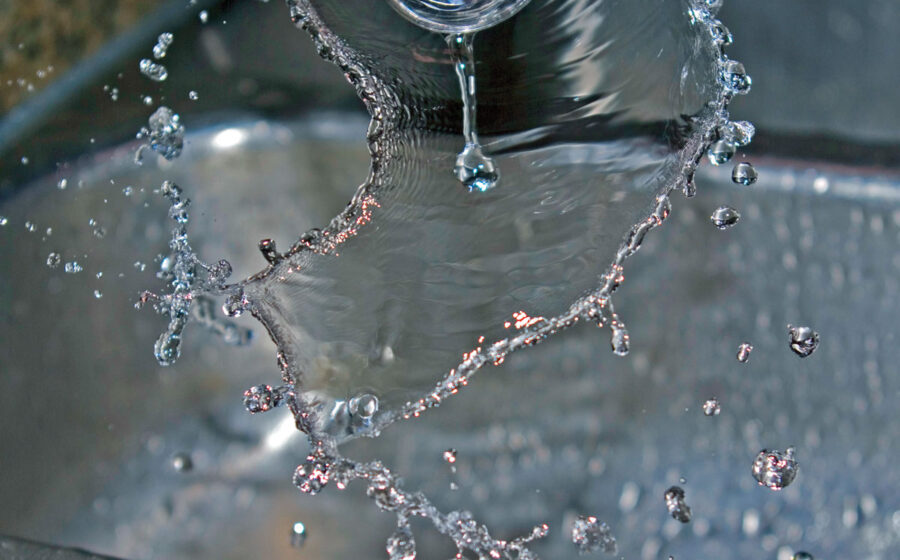[A]s new cold-brew coffee products pour onto the market, the process for creating dynamic and flavorful cold-brew is receiving increased attention. Many cafés still serve cold-brew as an afterthought in the summer, tossing coffee grounds into a plastic bucket for an untimed overnight soak. But considered attention to the cold-brewing process, starting with the water, elevates cold-brew from an asterisk on a seasonal menu to a vibrant brewing method worthy of the same care shown to hot brewing and espresso.
We started Pier Coffee, a Seattle-based cold-brew company, in 2013. Pier began as a nano-cold brewery and we experimented with brewing processes in an effort to create cold-brew that retained acidity and a complex flavor profile. By the time we were ready to move out of our nano-brewery and build a large-scale brewing facility, we knew that only one thing mattered: location, location, location. Unlike finding a spot for a café, we did not need to pay attention to density, foot traffic, or neighborhood. We knew we only needed to choose a place with the right kind of water.
The SCAA, individual coffee professionals, and even chemists have done incredible work recently to articulate parameters for brewing water.
In the Pacific Northwest, we enjoy water that tastes pretty good straight from a faucet or garden hose. However, at Pier Coffee, we don’t want to drink the water; we want to cold brew with it. When you drink a cup of coffee, you consume both the ingredients and the chemical process necessary to bind the ingredients. The chemical components of water are responsible for dissolving the coffee grounds in the brewing process. In coffee that is hot brewed, the chemical process is augmented by agitation, pressure and, of course, temperature. In a cold-brew process, with the absence of high temperature, we rely even more heavily on the water itself. The SCAA, individual coffee professionals, and even chemists have done incredible work recently to articulate parameters for brewing water. In our experience with cold brew, one key for extraction is water with hardness at the upper end of the SCAA’s acceptable range for total dissolved solids.
A quick glance at a US Geological Survey water quality map told us that if water hardness was a factor in determining our brewery location, we should move to Texas. (Coincidentally, there is a lot of interesting cold-brewing in Texas.) The Pacific Northwest in general and Seattle specifically is known for soft water. In our testing, cold-brewing with soft water seemed to stall extraction. In the early hours of brewing, extraction seemed to happen quickly. However, when the water was soft, the extraction stopped before the brewing cycle finished. With hard water, our readings rose more slowly but continued to climb to a higher level by the end of the brewing cycle. In what could be the beginning of a cold-brew parable, it was as if the water compounds were microscopic miners chipping away at the immersed coffee. The soft water miners worked frenetically and exhausted themselves early, the hard water miners chiseled away slowly and extracted more from the coffee by the end of the cycle.
We love the Puget Sound and decided to stick around. In order to determine the best place for our brewery, we read water quality reports, called water district officials, and took samples. The Pier Coffee brewery is now located south of Seattle in a facility with water hardness that is as near our target as we could find. As we continue to deepen our understanding of the relationship between water chemistry and cold-brew, we continue to experiment by adjusting the water and the brewing processes.
Water quality reports are easy to find and local municipal water officials are usually eager to share their knowledge. If you are cold-brewing in a café this summer, start by reading your water quality report and understanding the properties of the brewing tool—the water itself. This information also comes in handy when a customer who lives three zip codes away stops in to say they can’t make coffee at home taste the way it does in your café. Differences in water quality, hardness being one of them, impact the way coffee tastes even within tight geographical boundaries. Once you understand your water, run small test batches; mix water from your café with bottled water, see what happens when you use different mineral contents. Take time, pay attention, and consider your cold-brew.
Hardness of water is not the only factor for cold-brew extraction. There are also additional water qualities to track as well as pressure and agitation in the brewing process, grind size, and, most importantly, the selection of the coffee. Using all these tools in concert it is possible to cold brew coffee that retains acidity, sparkles on the tongue, and is a far cry from the dull flavor of an afterthought on the summer menu.
—Erin Williamson is the founder and owner of Pier Coffee in Seattle.
















